Restoration Hardware Takes Luxury Retail to the Next Level
Entering Restoration Hardwares massive New York or Boston store, guests will discover a shopping experience like no other. The RH design team has been redeveloping the traditional retail experience by doing away with the typical department store or big box store model instead oping for a gallery like shopping adventure.
Taking a closer look at the recently completed New York Gallery, our team explores how RH has elevated luxury retail by focusing on the shopping environment experience and how elevators are facilitating that design revolution.
On the corner of 9th & 13th W in New York, RH transformed an industrial brick building into four storeys of luxury retail space complete with a brand new facade, a breezy rooftop restaurant, and variety of lounge spaces. Central to the redesign is a soaring central atrium anchored around a high-speed scenic glass elevator. A show stopping feature with retail roots as far back as the 1850’s. E.V. Haughwout installed Elisia Otis’s first elevator in his multi storey department store to make the shopping life a little easier and later in the 1880’s Timothy Eatons installed elevators at his Queen St Toronto’s Eatons Centre as way to draw in customers.
Over a century later Restoration Hardware is banking on these architectural and mechanical wonders to cut through repetitive shopping floors and activate the large vertical corridor. In the newly introduced atrium, the empty space becomes dramatically animated by the elevator working as its own self contained luxury object. This is unlike anything customers would experience in traditional furniture shops or big box stores which hide the lift as an ugly accessibility necessity out of site. However here the architectural showpiece not only transports visitors through the vintage setting of the retail galleries, but it introduces a sense of movement and awe in what otherwise would be motionless building.
“It wasn’t the internet that killed retail stores; it was a lack of imagination and investment,” explains CEO Gary Friedman.
RH New York | The Gallery in the Historic Meatpacking District
www.restorationhardware.com/new-york
Designed by Architects Backen, Gillam & Kroeger the project sits within the bourgeoning Meatpacking District. Formally known for meat muck, night clubs, and take out, the neighbourhood is now home to SOHO House, the Highline and the Whitney Museum of American Art. Redevelopment in the area has created a sort of nexus for innovative and novel architectural projects looking to draw people in. However this reinvention of the grand vertical interior doesn’t start here in the meatpacking district, the grand atrium model was brought about to solve an entirely different problem.
This atrium concept is model perfected by architect John Portman’s in his contemporary hotel designs in Atlanta, New York, Boston and around the world. He described the whole idea as a way to “create an internal lung”. “You want to hopefully spark their enthusiasm,” he’s quoted as saying to the Times. “Like riding in a glass elevator: everyone talks on a glass elevator. You get on a closed-in elevator, everyone looks down at their shoes. A glass elevator lets people’s spirits expand. Architecture should be a symphony.”
RH Boston:
The Gallery at the Historic Museum of Natural History
RH | BOSTON | THE GALLERY AT THE HISTORIC MUSEUM OF NATURAL HISTORY
The concept of the glass elevator and activated atrium isn’t unique to just the New York showroom. To showcase the RH brand in Boston, the Boston Society for Natural History was restored, reclaimed and transformed into four levels of retail space becoming another symphony of experiences for the brand. The ground floor, which already had a beautiful entrance opens to the painstakingly recreated glass and iron pedestrian elevator from 1892. Envisioned by Bergmeyer Associates, the stacked iron column hoistway and glass cab is a breathtaking feature in RH’s merchandise gallery.
Similarly as they would in New York, guests pass under the entrance pavilion and enter into a grand lobby space immediately seeing the massive counterweight elevator on centre display. These elevators are inspired by the the iconic 1893 Bradbury Building in downtown Los Angeles. Unlike the meatpacking location, the team relocated the existing elevator to be reused as an essential architectural move to anchor the existing three story central atrium to the new expanded entrance on Newbury Street which previously did not exist.
RH Boston: The Gallery at the Historic Museum of Natural History
www.restorationhardware.com/boston
Otherwise the original building was painstakingly rehabilitated. The vaulted and iridescent gold-coffered ceiling was restored and is now visible from the first level 70 feet below resulting in a grand new space encouraging guests to explore. Many urbanists and architecture theorists suggest that these airy spaces create a ‘cloistered artificial island’ that dissuade visitors from venturing away, something every retailer can only dream of when year after year it seems other retailers are shutting down for good. Think of Toys R Us and Sears who filed for bankruptcy in 2018, closing over 1,000 of stores; Best Buy’s mobile shops are being shuttered, as are Starbucks’ Teavana locations. Yet, in the time of the retail apocalypse, RH’s brick and mortar stores are thriving. As Friedman continues to create these retail destinations, RH joins Apple with the revival of retail as they expand their footprint into popular “public spaces”.
“Stepping out of the elevator on level three to the sound of trickling fountains, guests enter the indoor conservatory & park with reproduction heritage olive trees .”
Restoration Hardware is well on its way to become as popular as the legendary retailers its replacing.“It wasn’t the internet that killed retail stores; it was a lack of imagination and investment,” explains CEO Gary Friedman. With nearly twenty magnificent brick and mortar locations in Canada and the USA, Friedmans reinvention of luxury retail is unquestionably rising above the competition.
References:
Backen & Gillam Architects | https://www.bgarch.com/
RH Design Galleries | https://www.restorationhardware.com/content/category.jsp?context=DesignGalleries&link=ExploreAllRHGalleries


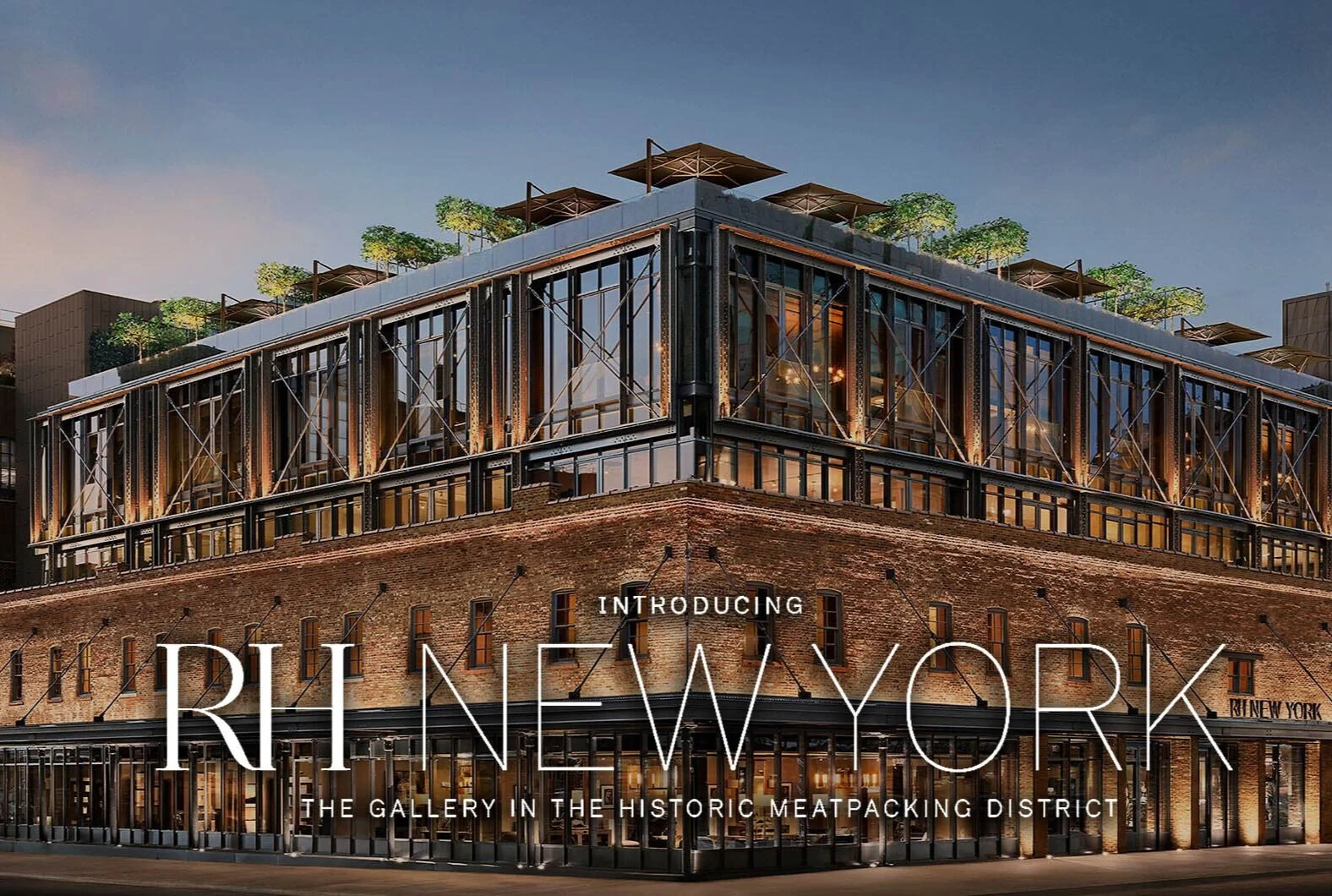
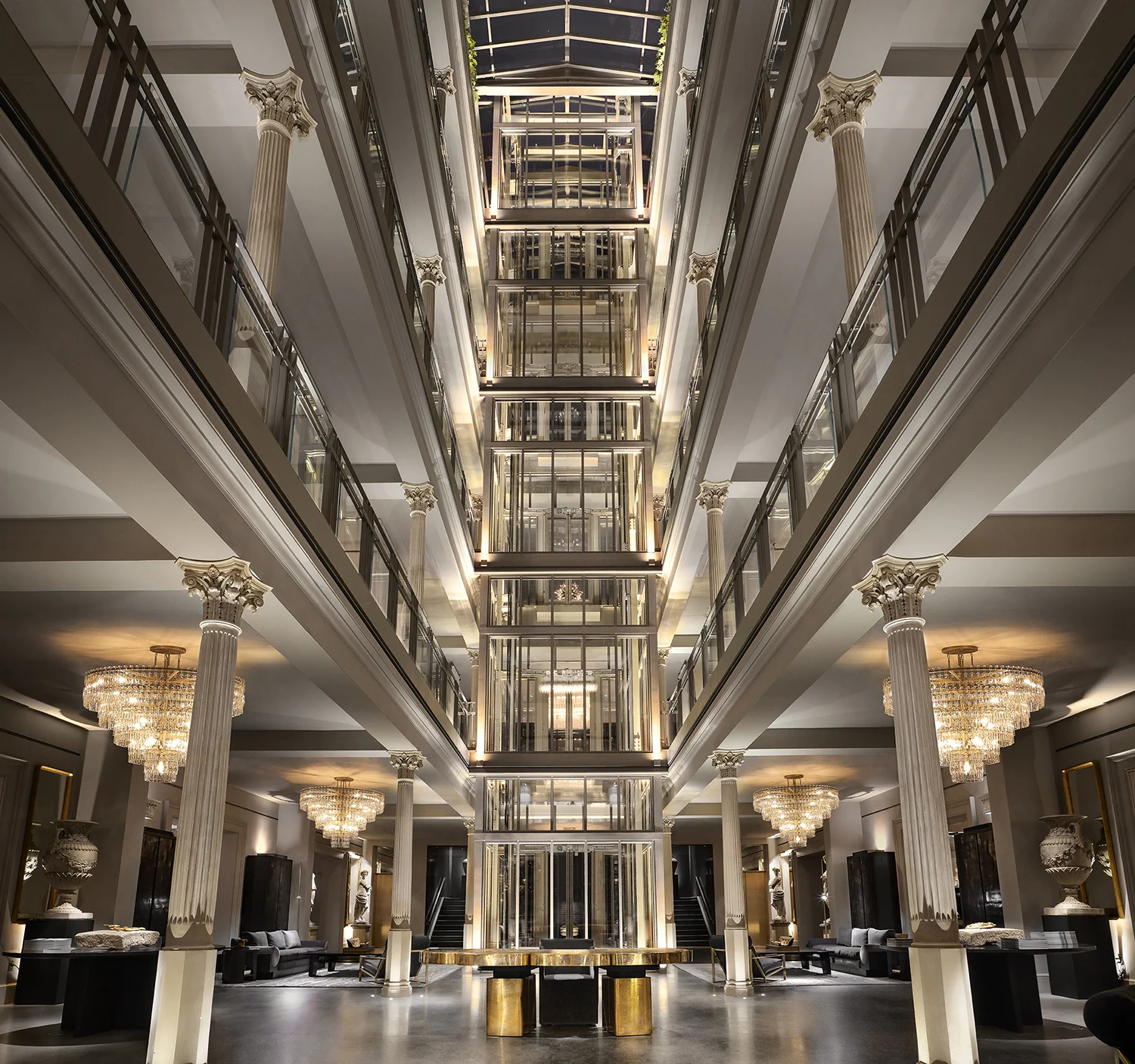
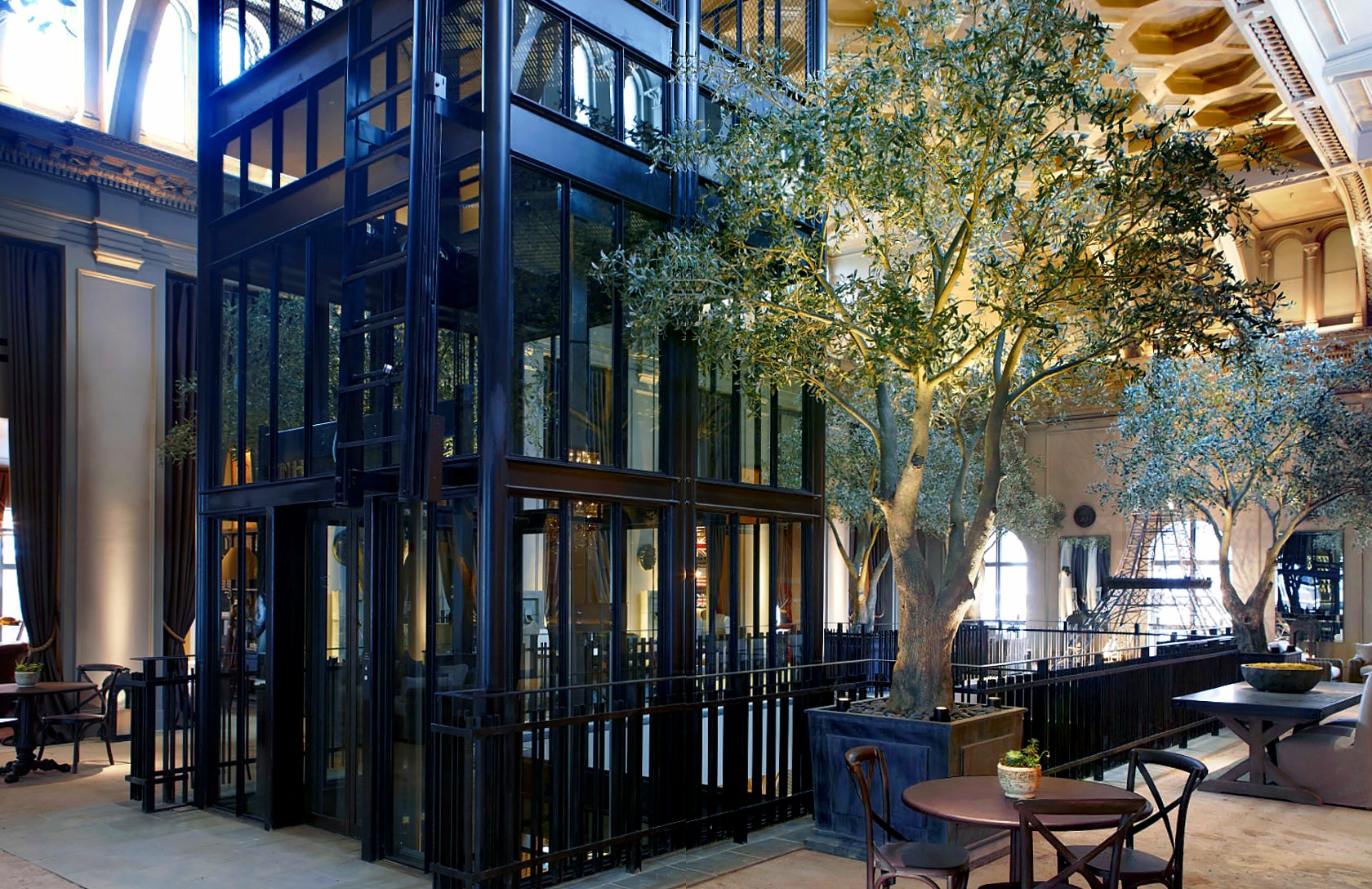








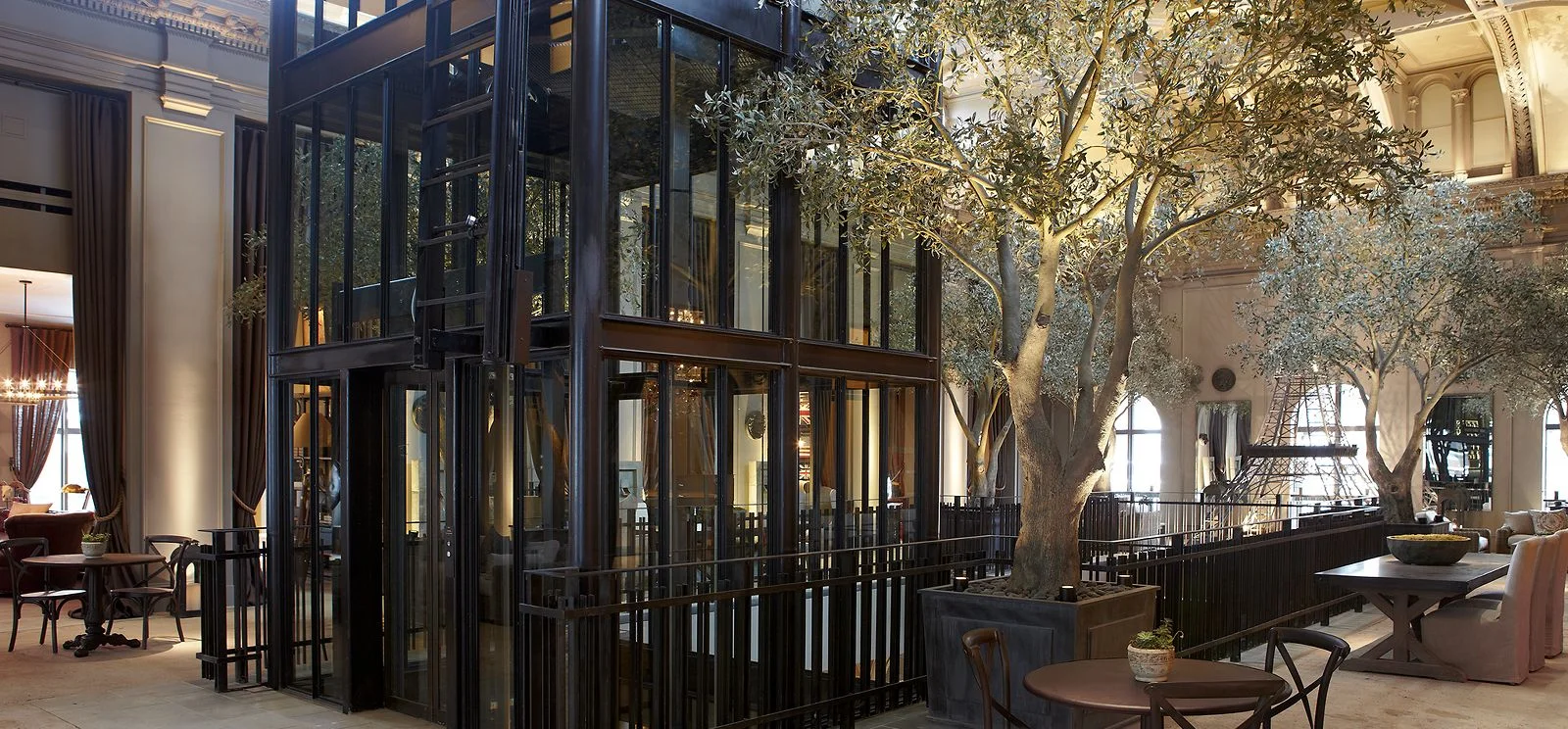
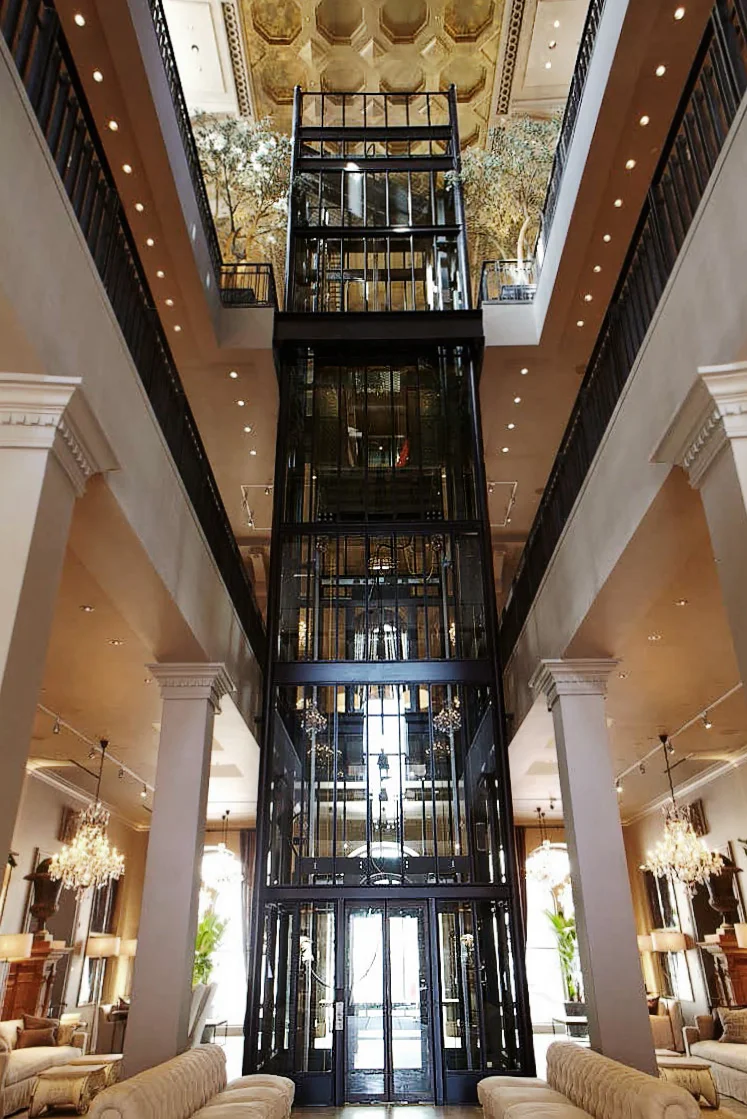


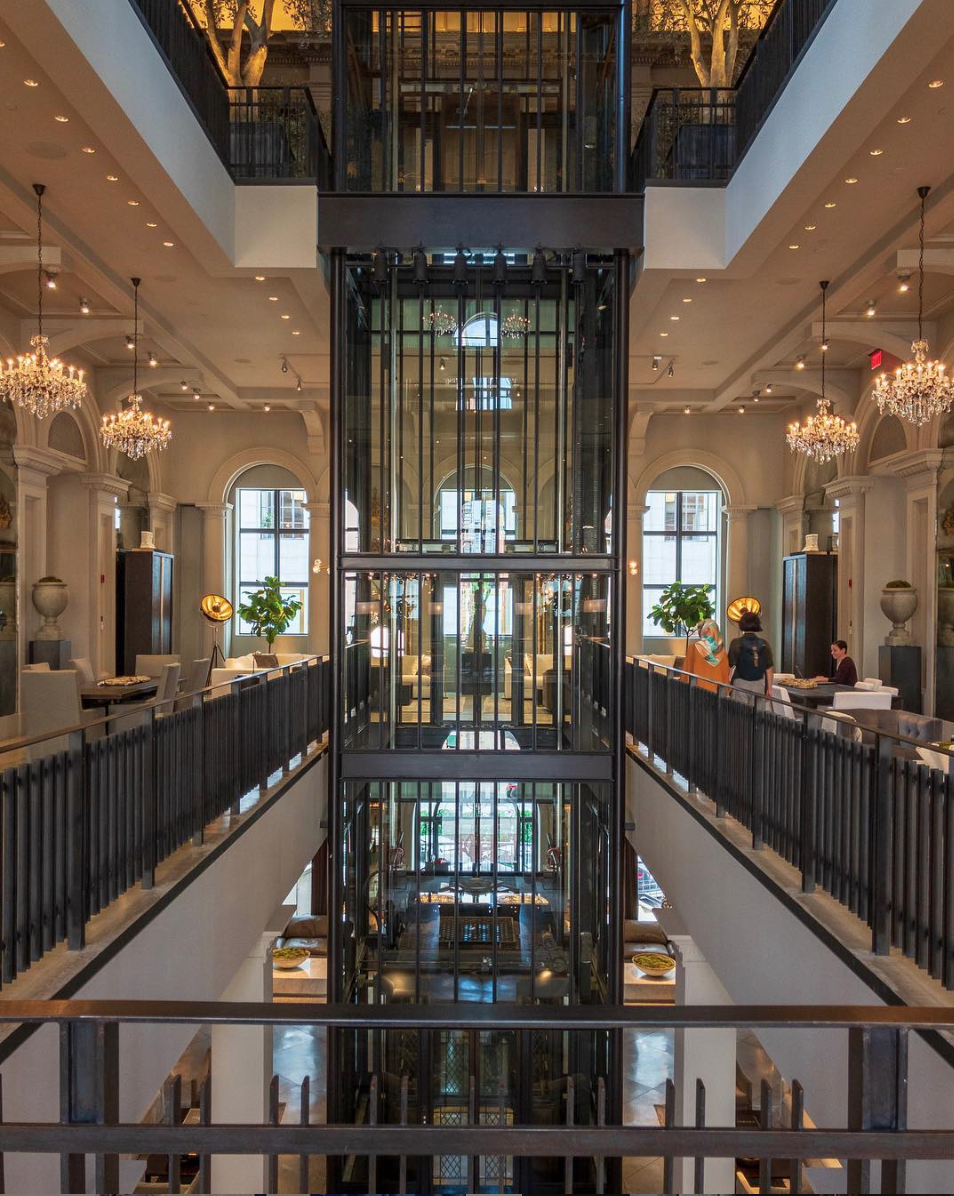




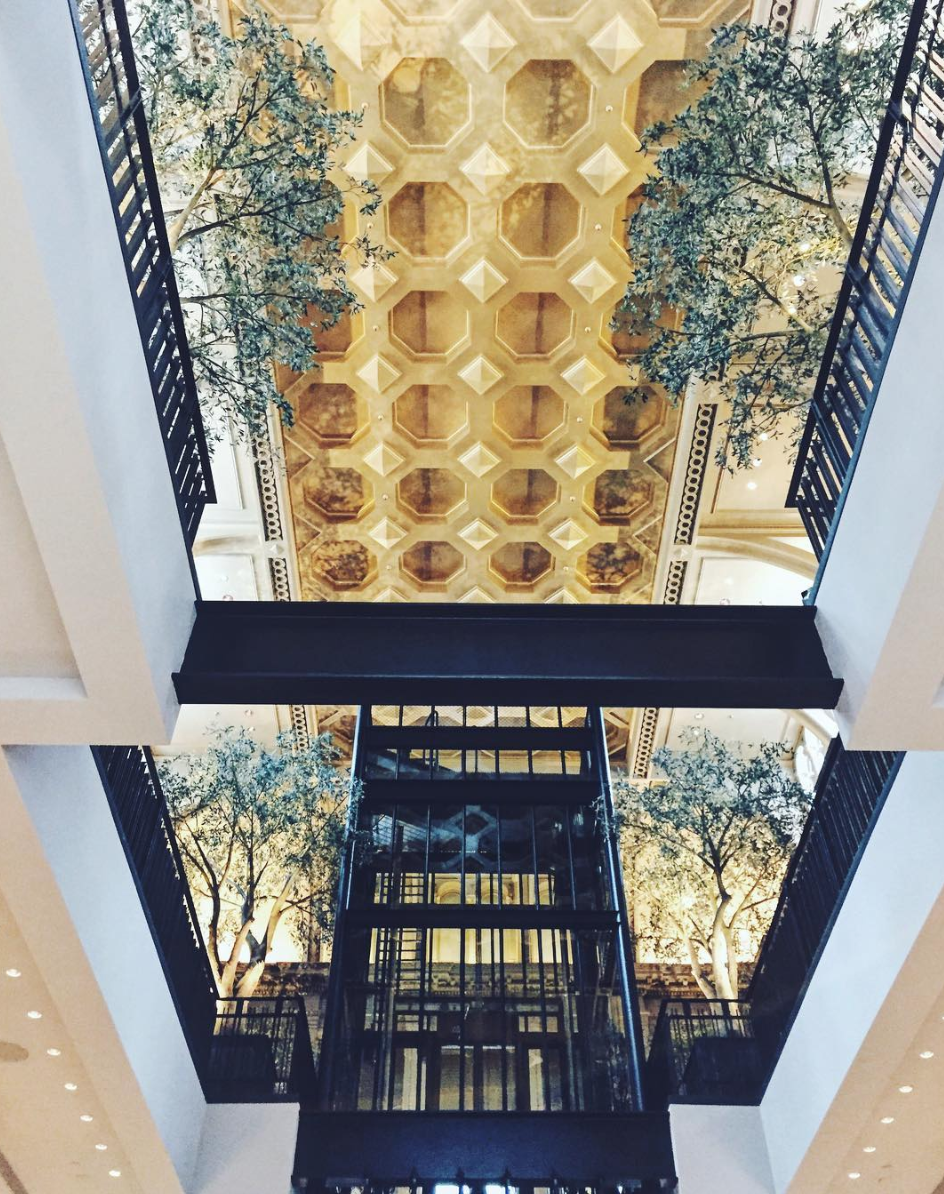

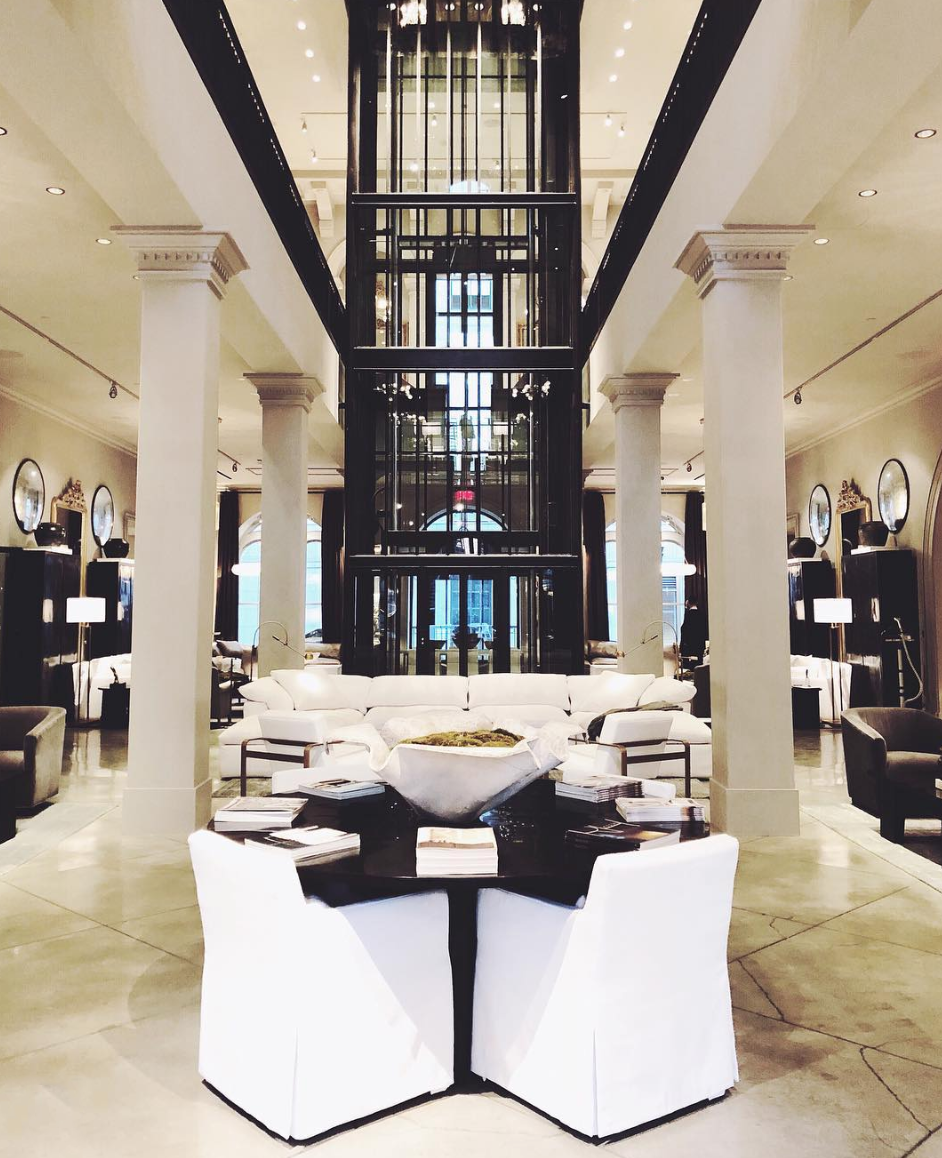











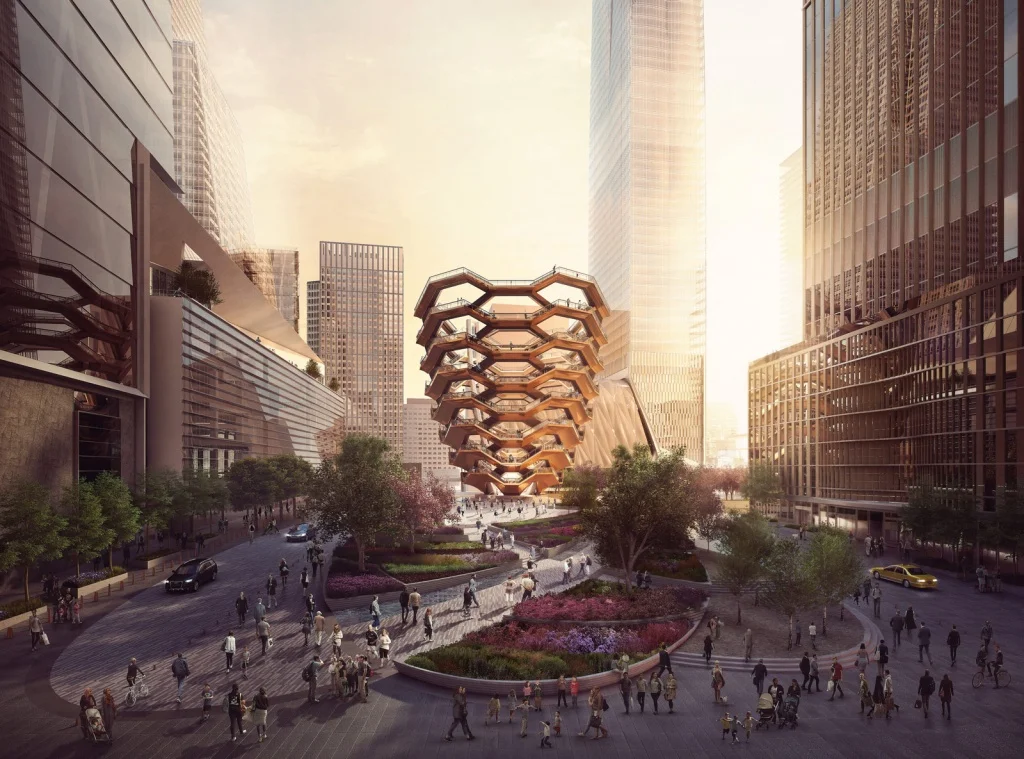
Le Dokhan's, Paris Arc de Triomphe is a luxury hotel located close to the iconic Arc de Triomphe. Guest rooms, restaurant, bar, fitness center and exceptional service are offered but what makes this hotel truly unique is its elevator cab, made from a vintage Louis Vuitton steamer trunk, adding luxury and nostalgia to guest experience. Perfect choice for luxury travelers visiting Paris.